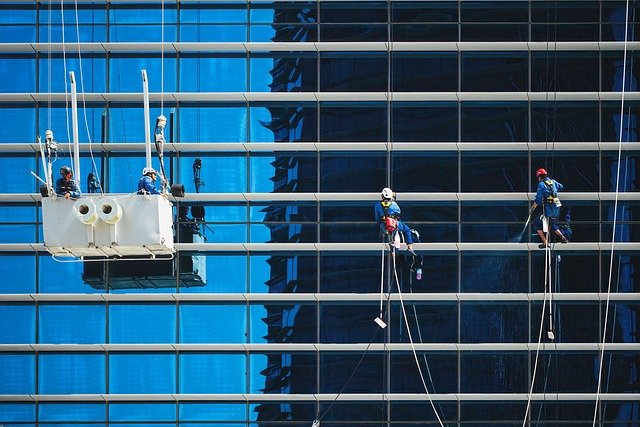Selecting and maintaining equipment for high-altitude service operations
Working at height requires careful equipment choices, disciplined maintenance, and ongoing skills development. For window cleaning and other high-altitude services, selection of rope systems, powered access platforms, inspection drones, and complementary tools affects safety, efficiency, and sustainability. This article outlines practical considerations for choosing and caring for gear used in highrise and ropeaccess work.

Equipment selection for highrise and ropeaccess
Choosing equipment for highrise and ropeaccess tasks begins with an assessment of access methods, building envelope, and task scope. Rope-access gear—harnesses, descenders, ascenders, anchor slings, and certified ropes—should meet recognized standards and match load and exposure conditions. For complex facades, combine rope systems with secondary fall-arrest devices and redundancy in anchors. Consider modularity: lightweight carabiners and adjustable slings can reduce setup time while supporting varied rigging. Equipment choices should reflect job duration, weather exposure, and the need to minimize disruption to building occupants and local services.
Integrating poweredaccess and automation
Poweredaccess platforms such as boom lifts, scissor lifts, and suspended cradle systems offer different trade-offs in reach, footprint, and operator requirements. For tight urban sites, compact poweredaccess units reduce street-level disruption; for tall curtain walls, telescopic booms can provide safer positioning. Automation and remote-controlled features increasingly support precision positioning and can reduce manual handling. When introducing automation, ensure compatibility with existing equipment, train operators on fail-safes, and verify site-specific limitations such as load capacities and overhead obstructions.
Ensuring safety, certification, and training
Safety depends on a system approach: certified equipment, routine inspections, and trained personnel. Employers and contractors should follow recognized certification schemes and local regulations for ropeaccess and poweredaccess operations. Training must cover rigging, fall-rescue, equipment inspection, and hazard recognition, and should be refreshed periodically. Records of certification and training help demonstrate compliance. Rescue plans and practiced drills are essential, since rapid, practiced response reduces risk in emergencies. Emphasize a safety culture where crew can report faults without repercussions.
Equipment maintenance and sustainability
Routine maintenance extends service life and supports sustainability goals. Implement scheduled checks for wear, corrosion, UV degradation, and mechanical function; replace ropes and webbing according to manufacturer guidance and usage history. Keep maintenance logs for each item to track inspections and repairs. Where possible, select durable materials and repairable components to reduce waste. Consider end-of-life recycling or trade-in programs offered by suppliers, and factor lifecycle costs—initial purchase, servicing, and disposal—into procurement decisions.
Scheduling, seasonality, and gigwork coordination
High-altitude services are affected by seasonality, weather windows, and workforce flux. Plan scheduling to align favorable weather with crews trained in both ropeaccess and poweredaccess techniques. For companies relying on gigwork or contracted crews, standardize equipment lists, minimum training requirements, and inspection protocols so temporary staff can integrate safely. Use clear scheduling and communication tools to coordinate multi-day jobs and to manage equipment handovers. Anticipate delays caused by wind, freezing conditions, or local restrictions and build contingencies into timelines.
Drones, inspection tools, and upskilling
Drones and remote inspection tools complement hands-on work by enabling pre-job surveys, façade mapping, and defect detection without immediate worker exposure. Integrating drones requires trained pilots, data workflows, and consideration of privacy and local aviation rules. Upskilling staff in drone operation, digital reporting, and automated maintenance systems improves operational efficiency. Encourage cross-training so technicians can operate both access systems and inspection technology, expanding capability while maintaining safety and compliance.
Conclusion Effective high-altitude operations combine appropriate selection of ropeaccess and poweredaccess equipment, disciplined maintenance, and continuous training and certification. Integrating automation and drones can improve planning and reduce exposure when implemented with robust safety procedures. Scheduling that accounts for seasonality and workforce variability, paired with clear maintenance records and sustainability choices, supports safer and more reliable service delivery in highrise environments.






